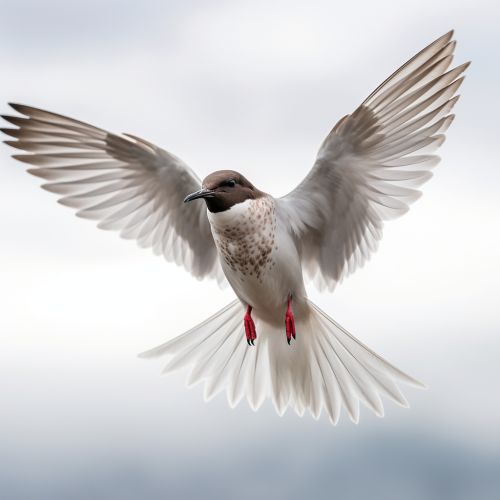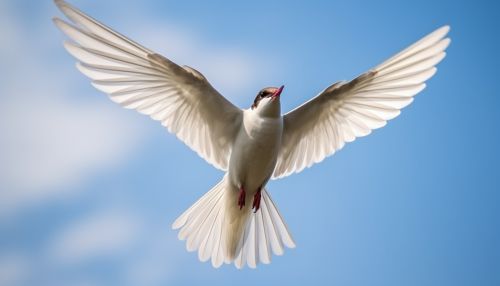Arctic Tern
Introduction
The Arctic Tern (Sterna paradisaea) is a remarkable seabird species known for its impressive migratory patterns. It is a member of the tern family, Sternidae, and is renowned for having the longest-known annual migration of any animal. The bird's journey from its Arctic breeding grounds to the Antarctic and back again is a round trip of about 25,000 miles (40,000 kilometers).


Taxonomy and Evolution
The Arctic Tern was first described by Carl Linnaeus in his landmark 1758 10th edition of Systema Naturae. It is classified under the genus Sterna, a group of medium to large terns. The species name, paradisaea, is derived from the Latin word for paradise, referring to the bird's heavenly flight.
Description and Identification
Arctic Terns are medium-sized birds, measuring 28-39 cm in length with a wingspan of 65-75 cm. They have a slender body, a deeply forked tail, and sharp, pointed wings. The plumage is predominantly grey and white, with a characteristic black cap on the head. The bill is red, as are the feet, giving the bird a distinctive appearance.
Distribution and Habitat
Arctic Terns have a circumpolar distribution, breeding in Arctic and sub-Arctic regions of North America, Europe, and Asia. They migrate to the Antarctic waters for the northern winter, making them one of the few species to see two summers each year. Their habitats include coastal areas, islands, and occasionally inland areas near water bodies.
Behaviour and Ecology
Diet and Feeding
Arctic Terns are primarily piscivorous, feeding on a diet of small fish and invertebrates. They employ a hunting technique known as 'hover diving', where they hover above the water and dive to catch prey.
Reproduction
Arctic Terns are monogamous, with both parents sharing the responsibility of incubating the eggs and raising the chicks. The breeding season starts in late spring, with the female laying 1-3 eggs in a ground nest.
Migration
The migration of the Arctic Tern is one of the most remarkable journeys in the animal kingdom. They travel from their Arctic breeding grounds to the Antarctic and back again each year, a round trip of approximately 25,000 miles. This migration allows them to take advantage of the abundant food resources in both the Arctic and Antarctic summers.
Conservation Status
The Arctic Tern is currently listed as Least Concern on the IUCN Red List of Threatened Species. However, threats such as habitat loss, climate change, and human disturbance are potential concerns for the species' future.
